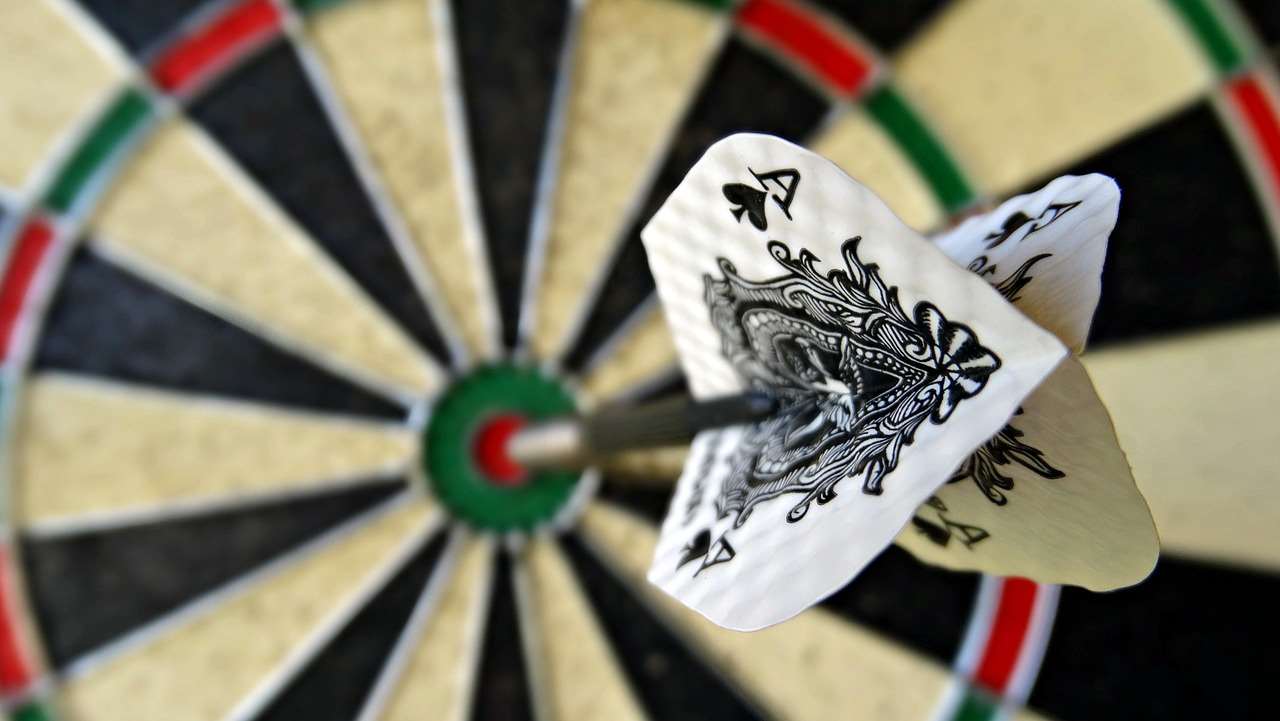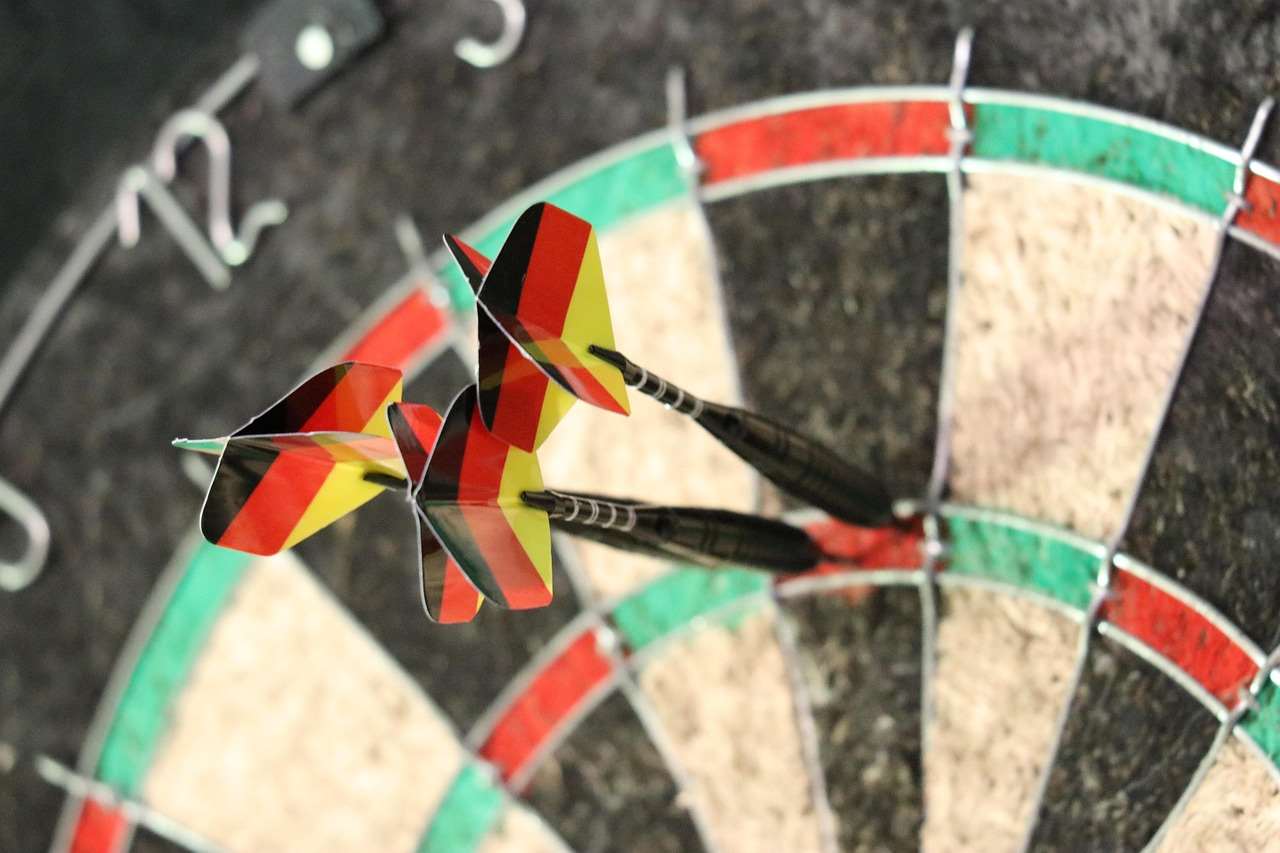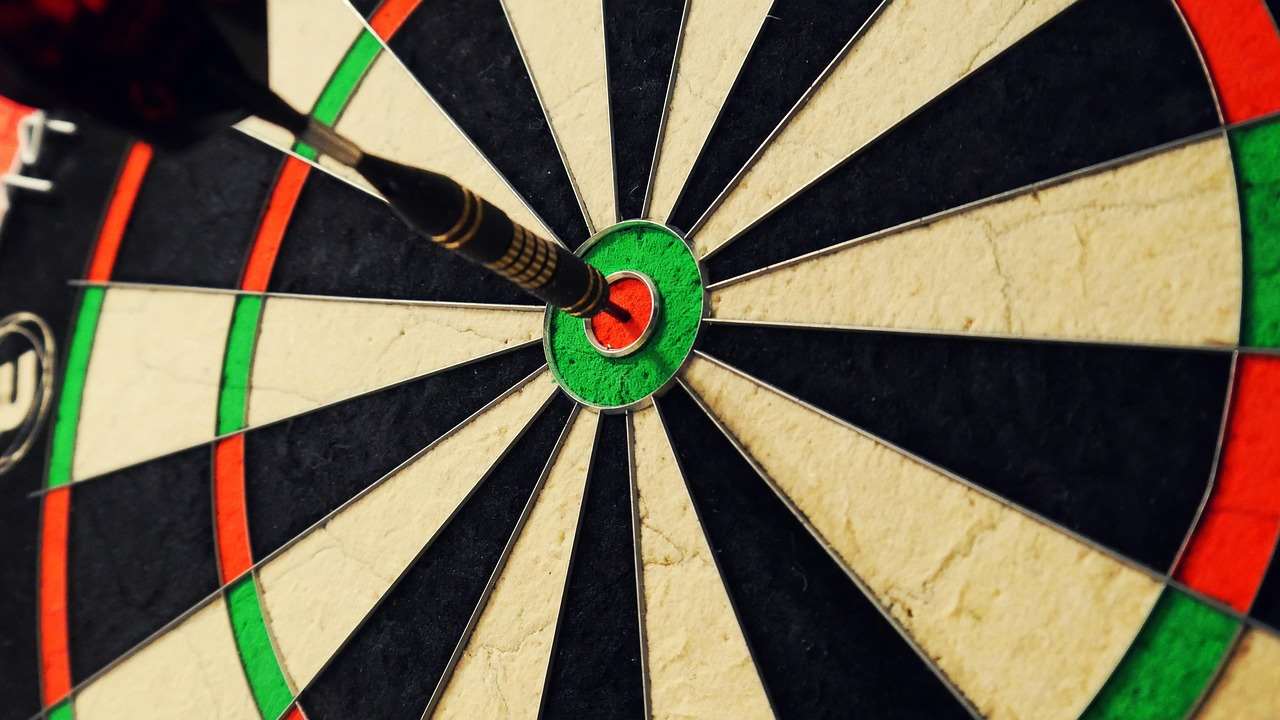Unlocking consistent success in daily fantasy darts hinges on one key element: **using stats**. This guide will teach you how to leverage crucial data points to build winning lineups. You’ll discover which stats matter most, where to find them, and how to apply them strategically, improving your chances of cashing in on every contest.
⚠️ Still Using Pen & Paper (or a Chalkboard)?! ⚠️
Step into the future! The Dart Counter App handles all the scoring, suggests checkouts, and tracks your stats automatically. It's easier than you think!
Try the Smart Dart Counter App FREE!Ready for an upgrade? Click above!
Why Is Using Stats For Daily Fantasy Darts Essential?
**Using stats for daily fantasy darts** isn’t just a suggestion; it’s a necessity. Unlike some fantasy sports where luck can play a significant role, darts is a game of precision and consistency. Raw talent is undeniable, but understanding a player’s statistical profile provides a far greater edge. Guesswork is eliminated, replaced with informed decisions based on hard numbers. When you dive into the world of darts, you’ll quickly learn that analyzing data makes all the difference.
Consider this: two players might appear equally skilled based on reputation alone. However, a closer look at their stats could reveal that one consistently hits more 180s, boasts a higher checkout percentage, or performs better under pressure. These are the nuances that separate a winning fantasy lineup from a losing one.
Ignoring statistics in daily fantasy darts is like navigating a maze blindfolded. You might stumble upon the exit occasionally, but you’ll mostly be wandering aimlessly. Embrace the data, and you’ll transform your approach from a gamble to a calculated investment.

Key Statistics to Analyze for Daily Fantasy Darts
So, which statistics should you prioritize when building your daily fantasy darts lineups? Here’s a breakdown of the most impactful metrics:
- Three-Dart Average (3DA): This is arguably the most important statistic. It represents a player’s average score per three darts thrown, providing a comprehensive measure of their overall performance. A higher 3DA generally indicates a more consistent and accurate player.
- 180s Per Leg: The number of 180s (maximum scores) a player hits per leg is a valuable indicator of their scoring potential. While not the only factor, players who consistently hit 180s will rack up significant points in most fantasy formats.
- Checkout Percentage (Double Percentage): This reflects a player’s ability to finish legs. A high checkout percentage demonstrates composure and accuracy under pressure, crucial qualities for a successful darts player.
- First 9 Dart Average: This shows how quickly a player gets into the rhythm of the game. It’s a good indicator of initial sharpness and whether they come out firing or start slowly.
- Legs Won Against the Throw (LWAT): This statistic reveals a player’s ability to break their opponent’s throw. It’s a measure of mental fortitude and clutch performance, indicating their capacity to win even when at a disadvantage.
- Head-to-Head Record: While past performance isn’t always indicative of future results, understanding a player’s historical performance against their opponent can provide valuable context. Some players simply match up better against certain styles.
Beyond these core stats, consider looking at more granular data like average visit score, percentage of darts thrown at the treble 20, and even specific double percentages (e.g., double 16, double 20). The more information you have, the better equipped you’ll be to make informed decisions.
Where To Find Reliable Darts Statistics
Now that you know which statistics to look for, the next step is finding reliable sources. The good news is that darts has become increasingly data-driven in recent years, with several excellent resources available online. Finding reliable data sources is critical for **using stats for daily fantasy darts** effectively.
- Official Tournament Websites: The websites of major tournaments (e.g., PDC, World Darts Championship) often provide live scoring and detailed statistics for each match.
- Dedicated Darts Statistics Websites: Several websites specialize in tracking darts statistics, offering comprehensive databases of player performance. Examples include DartConnect and DartsDatabase.
- Fantasy Darts Platforms: Some daily fantasy darts platforms provide their own statistics and analysis tools, making it easier to research players and build lineups.
- Sports News Websites: Major sports news websites and sports data providers like ESPN or Opta may also provide darts statistics and analysis, especially around major tournaments.
When evaluating data sources, consider their accuracy, completeness, and timeliness. Look for sources that are regularly updated and provide detailed information on a wide range of players and tournaments. It’s also wise to cross-reference data from multiple sources to ensure accuracy.

Applying Statistics to Daily Fantasy Darts Strategy
Simply collecting statistics isn’t enough; you need to know how to apply them strategically. Here’s how to integrate data analysis into your daily fantasy darts lineup building process:
- Identify Value Plays: Look for players whose salaries are undervalued relative to their statistical performance. A player with a strong 3DA and checkout percentage might be a bargain if their salary is lower than comparable players.
- Consider Matchup Dynamics: Analyze how a player’s strengths and weaknesses match up against their opponent. For example, a player who excels at hitting 180s might be a good pick against an opponent who struggles to defend against high scoring.
- Account for Recent Form: While historical data is valuable, pay attention to a player’s recent form. A player who has been playing well in recent weeks might be a better pick than someone who has been struggling, even if their overall statistics are similar.
- Pay Attention to Tournament Format: The specific scoring system of your chosen fantasy platform will influence which statistics are most important. For example, if 180s are heavily weighted, prioritize players who consistently hit maximum scores.
- Manage Risk: Don’t put all your eggs in one basket. Diversify your lineups by selecting players with different risk profiles. A mix of reliable performers and high-upside options can increase your chances of success.
Remember that statistics are just one piece of the puzzle. Also consider factors like player motivation, tournament pressure, and even crowd support when making your final decisions. Becoming skilled at **using stats for daily fantasy darts** requires a holistic view.
Beyond the Averages: Advanced Statistical Considerations
Once you’ve mastered the basics of analyzing darts statistics, you can delve into more advanced concepts. These include:
- Regression Analysis: Using statistical techniques to identify trends and predict future performance based on historical data.
- Variance Analysis: Understanding the degree to which a player’s performance varies from their average. Some players are more consistent than others, and this can impact their value in daily fantasy.
- Correlation Analysis: Identifying relationships between different statistics. For example, is there a strong correlation between a player’s 3DA and their checkout percentage?
- Expected Value (EV): Calculating the expected value of a player based on their probability of achieving certain statistical milestones. This can help you identify players who are likely to outperform their salaries.
These advanced techniques require a deeper understanding of statistics and data analysis. However, mastering them can give you a significant edge over the competition. Exploring the dynamics of building a team or darts club involves strategic planning.

Understanding Opponent Specific Stats
Delving deeper than general averages unlocks another powerful layer of analysis. Understanding how a player performs against *specific* opponents adds a significant advantage. Some players simply have styles that other players struggle against.
- Head-to-Head History Breakdown: Don’t just look at the overall win/loss record. Analyze the average scores, 180s, and checkout percentages in those matches. Were the wins decisive, or narrow escapes?
- Style Matching: Does Player A struggle against fast-paced throwers, or those with unconventional styles? Conversely, does Player B dominate slow, methodical players? Identifying these tendencies is invaluable.
- Pressure Performance vs. Specific Opponents: How does a player’s checkout percentage change when facing a particular opponent? Do they crumble under pressure, or thrive in high-stakes situations?
For example, Player X might have a stellar overall checkout percentage, but consistently falters against Player Y’s aggressive scoring. This information helps you make nuanced decisions, even when general statistics suggest otherwise. Remember, **using stats for daily fantasy darts** effectively is about uncovering these hidden edges.
Bankroll Management & Staking Levels
No matter how skilled you become at analyzing statistics, **proper bankroll management is essential for long-term success in daily fantasy darts.** Treat it like an investment, not a gamble. Setting realistic goals and managing risk is key.
- Define Your Bankroll: Determine the amount of money you’re comfortable allocating to daily fantasy darts, and stick to it.
- Set Staking Levels: Decide what percentage of your bankroll you’ll risk on each contest. A common guideline is to risk no more than 1-5% per entry.
- Track Your Results: Monitor your wins and losses to identify areas for improvement and adjust your strategy as needed.
- Be Patient: Don’t expect to win every contest. Variance is a part of the game. Stay disciplined and focused on the long-term.
Consistent, informed decision-making combined with prudent bankroll management provides the foundation for sustainable success.

The Importance of Context: Stats Don’t Tell the Whole Story
While statistics are crucial, it’s important to remember that they don’t tell the whole story. Context matters. Here are some factors to consider alongside the numbers:
- Player Motivation: Is a player competing in a major tournament with significant prize money at stake? Or are they playing in a smaller event with less incentive?
- Mental State: Is a player dealing with personal issues or injuries that might affect their performance?
- Crowd Support: Does a player tend to perform better in front of a supportive crowd?
- Schedule & Fatigue: Are they playing multiple matches in quick succession, potentially leading to fatigue?
These factors are difficult to quantify, but they can have a significant impact on a player’s performance. A truly skilled daily fantasy darts player considers both the statistics and the surrounding circumstances. Perhaps promoting local darts would bring more players to the leagues.

Putting It All Together: A Daily Fantasy Darts Example
Let’s illustrate how to **use stats for daily fantasy darts** with a hypothetical example:
Imagine you’re building a lineup for a daily fantasy contest that heavily rewards 180s. You have two players to choose from:
- Player A: 3DA of 95, Checkout Percentage of 45%, 0.4 180s Per Leg, Salary: $8,000
- Player B: 3DA of 90, Checkout Percentage of 50%, 0.6 180s Per Leg, Salary: $7,500
Based solely on 3DA and checkout percentage, Player A appears to be the slightly better choice. However, Player B hits significantly more 180s per leg, which is heavily rewarded in this contest. Additionally, Player B has a lower salary, freeing up cap space to spend on other players.
In this scenario, Player B is likely the better pick, even though their overall statistics are slightly lower. This demonstrates the importance of tailoring your strategy to the specific scoring system and prioritizing the statistics that are most relevant. Understanding the intricacies of organizing a local darts league can enhance your strategy.
Conclusion: Mastering the Art of Statistical Darts
In conclusion, **using stats for daily fantasy darts** is paramount to success. By understanding which statistics matter most, where to find reliable data, and how to apply them strategically, you can gain a significant edge over the competition. Remember to consider factors beyond the averages, such as player motivation and tournament pressure. And most importantly, practice disciplined bankroll management. Dive into the data, refine your approach, and you’ll be well on your way to building winning lineups and cashing in on your daily fantasy darts investments. Start analyzing stats today and elevate your fantasy darts game to the next level! Now go forth and conquer the dartboard!
Hi, I’m Dieter, and I created Dartcounter (Dartcounterapp.com). My motivation wasn’t being a darts expert – quite the opposite! When I first started playing, I loved the game but found keeping accurate scores and tracking stats difficult and distracting.
I figured I couldn’t be the only one struggling with this. So, I decided to build a solution: an easy-to-use application that everyone, no matter their experience level, could use to manage scoring effortlessly.
My goal for Dartcounter was simple: let the app handle the numbers – the scoring, the averages, the stats, even checkout suggestions – so players could focus purely on their throw and enjoying the game. It began as a way to solve my own beginner’s problem, and I’m thrilled it has grown into a helpful tool for the wider darts community.